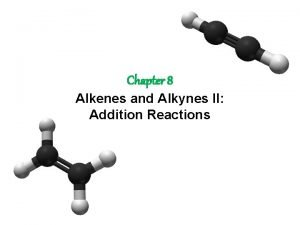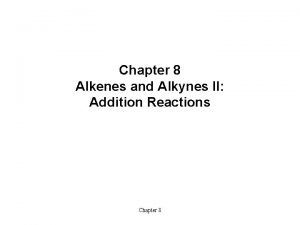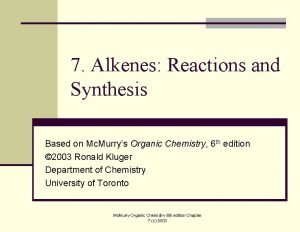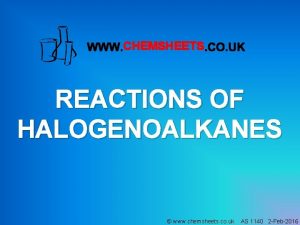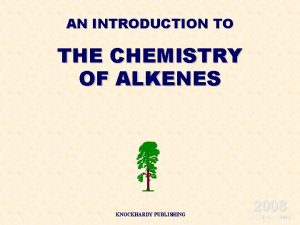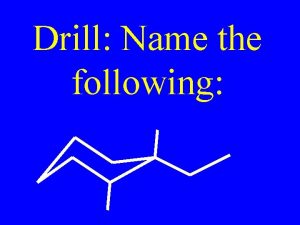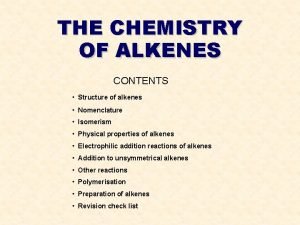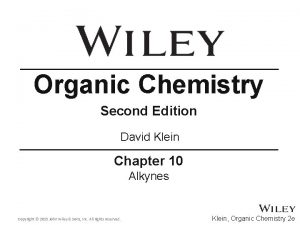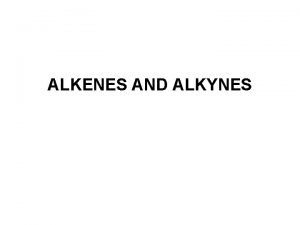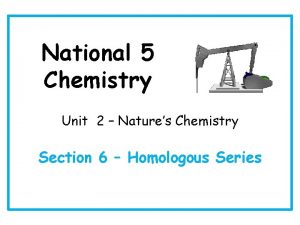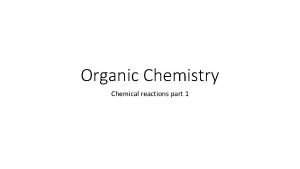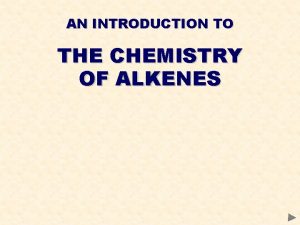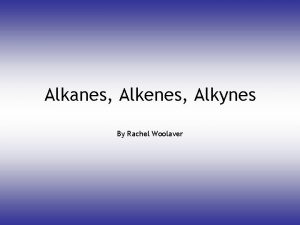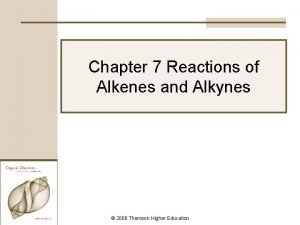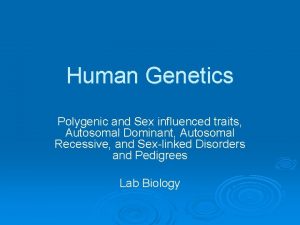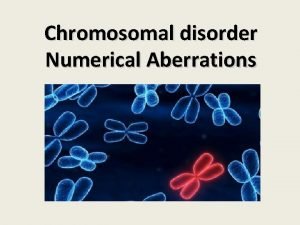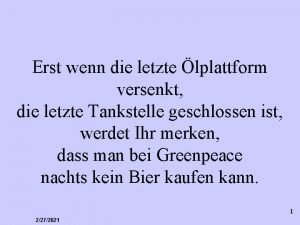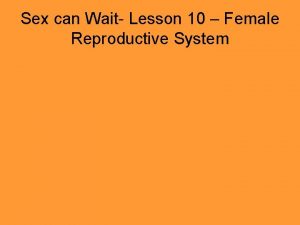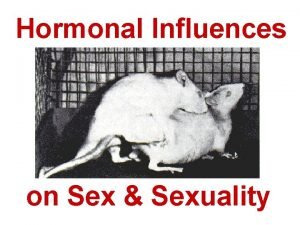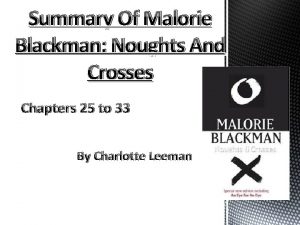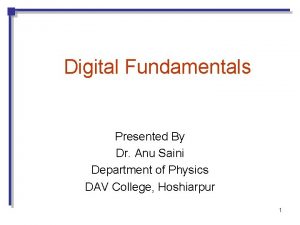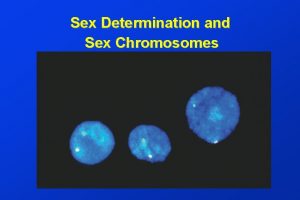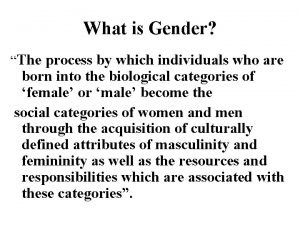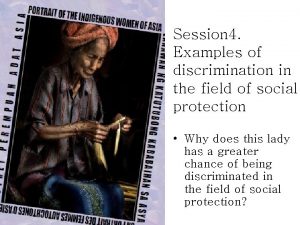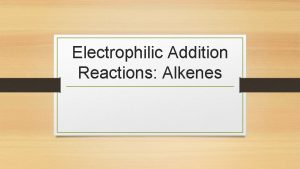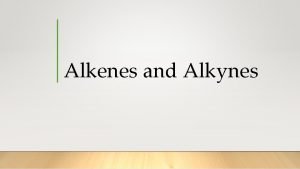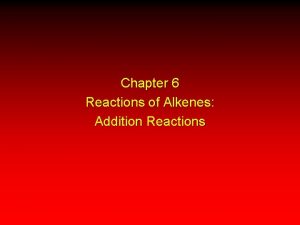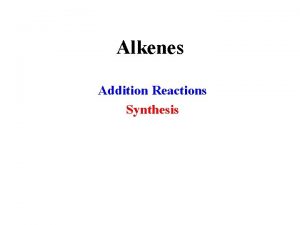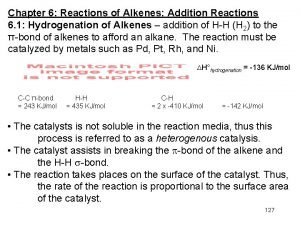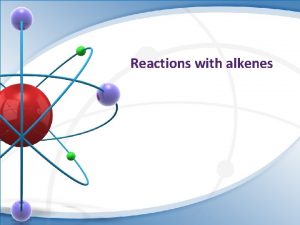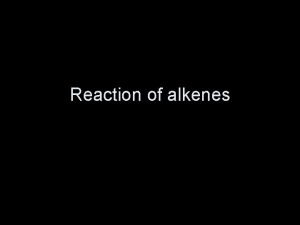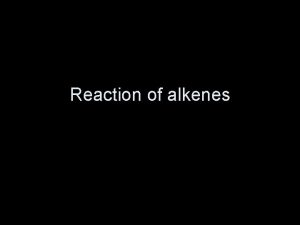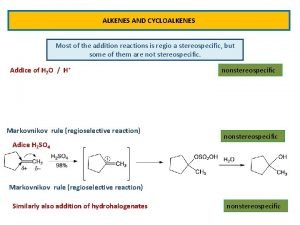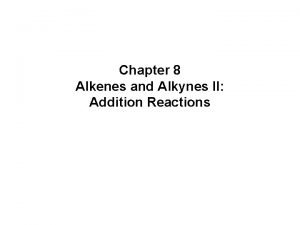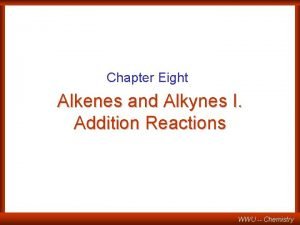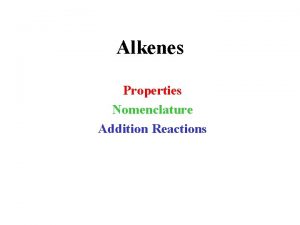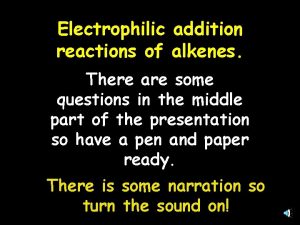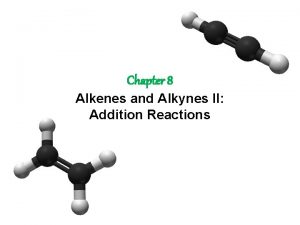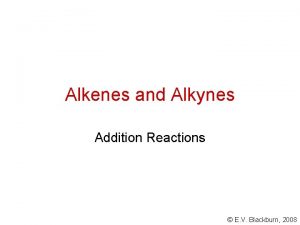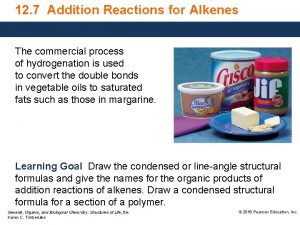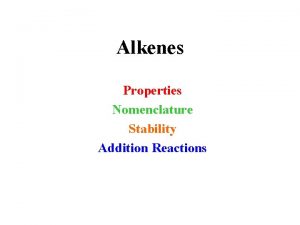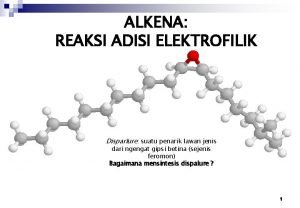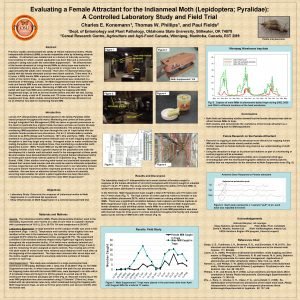Reactions of Alkenes Addition Reactions Disparlure sex attractant























































- Slides: 55

Reactions of Alkenes: Addition Reactions Disparlure: sex attractant of the female gypsy moth. (A type of pheromone. ) 1

Addition Reactions I. Hydrogenation of Alkenes oleic acid (unsaturated) stearic acid (saturated) 2

I. Hydrogenation of Alkenes A. Heats of hydrogenation DHº ~ -30 kcal/mol DHº -30. 1 kcal -28. 1 -27. 2 More substituted more stable. -27. 8 -26. 7 3

I. Hydrogenation of Alkenes A. Heats of hydrogenation less stable more stable 4

I. Hydrogenation of Alkenes B. Stereochemistry of hydrogenation anti addition syn addition Catalytic hydrogenation proceeds by syn addition: 5

I. Hydrogenation of Alkenes Question 6 -1. Give the product of the following reaction. Click on the arrow to check your answer. Check Answer 6

I. Hydrogenation of Alkenes Answer 6 -1. Give the product of the following reaction. Click on the arrow to check your answer. 7

II. Electrophilic Addition “Loose” p electrons are nucleophilic (Lewis bases), react with electrophiles (Lewis acids). 8

II. Electrophilic Addition A. Addition of hydrogen halides (X = Cl, Br, I) Reactivity: HI > HBr > HCl >> HF (stronger acid = better electrophile) 9

II. Electrophilic Addition A. Addition of hydrogen halides 1. Markovnikov’s rule In the addition of HX to an alkene, the H goes to the carbon with more H’s. Question 6 -2. Draw the products. Click on the arrow to check answers. Check Answer 10

II. Electrophilic Addition A. Addition of hydrogen halides 1. Markovnikov’s rule In the addition of HX to an alkene, the H goes to the carbon with more H’s. Answer 6 -2. 11

II. Electrophilic Addition A. Addition of hydrogen halides 2. mechanism Mechanistic interpretation of Markovnikov’s rule: The reaction proceeds through the more stable carbocation intermediate. 12

II. Electrophilic Addition A. Addition of hydrogen halides 2. mechanism lower Ea faster rate of formation 13

II. Electrophilic Addition A. Addition of hydrogen halides 3. carbocation rearrangements 14

II. Electrophilic Addition A. Addition of hydrogen halides 3. carbocation rearrangements Question 6 -3. Give the expected major product for each reaction. Click on the arrow to check answers. Check Answer 15

II. Electrophilic Addition A. Addition of hydrogen halides 3. carbocation rearrangements Answer 6 -3. Give the expected major product for each reaction. Click on the arrow to check answers. forms tertiary carbocation- no need for rearrangement. forms secondary carbocation, rearranges to a tertiary carbocation via a hydride shift forms a secondary carbocation, rearranges to a tertiary carbocation via a methide shift 16

II. Electrophilic Addition A. Addition of hydrogen halides 4. free-radical addition of HBr Markovnikov orientation anti. Markovnikov orientation (peroxide effect) 17

II. Electrophilic Addition A. Addition of hydrogen halides 4. free-radical addition of HBr Free radical chain mechanism: Initiation Propagation 18

II. Electrophilic Addition A. Addition of hydrogen halides 4. free-radical addition of HBr Reaction proceeds through more stable radical intermediate. 19

II. Electrophilic Addition A. Addition of hydrogen halides 4. free-radical addition of HBr Compare: addition of HBr with and without peroxides Markovnikov orientation More stable intermediate in both cases. anti. Markovnikov orientation Regiochemical control 20

II. Electrophilic Addition A. Addition of hydrogen halides Question 6 -5. Give the major products of the following reactions. Click on the arrow to check your answer. Check Answer 21

II. Electrophilic Addition A. Addition of hydrogen halides Answer 6 -5. Give the major products of the following reactions. goes Markovnikov via electrophilic reaction goes anti-Markovnikov via radical reaction rearranges to more stable carbocation goes anti-Mark via free radical, no rearrangement 22

II. Electrophilic Addition B. Addition of sulfuric acid (industrial) alkyl hydrogen sulfate overall: hydration Markovnikov orientation 23

II. Electrophilic Addition C. Acid-catalyzed hydration reverse of dehydration (Le Châtelier) Markovnikov Principle of microscopic reversibility 24

II. Electrophilic Addition D. Addition of halogens (X = Cl or Br) a vicinal dihalide Stereoselective anti addition: trans only 25

II. Electrophilic Addition D. Addition of halogens Mechanism: halonium ions cyclic bromonium ion trans product anti addition 26

II. Electrophilic Addition E. Formation of halohydrins vicinal halohydrin anti addition 27

II. Electrophilic Addition E. Formation of halohydrins Regioselective: 28

II. Electrophilic Addition E. Formation of halohydrins resonance hybrid: more substituted C carries greater d+, has stronger attraction for nucleophile 29

II. Electrophilic Addition E. Formation of halohydrins Other nucleophiles: 30

II. Electrophilic Addition E. Formation of halohydrins Question 6 -8. Give the products, showing stereochemistry where applicable. Click on the arrow to check your answers. Check Answer 31

II. Electrophilic Addition E. Formation of halohydrins Answer 6 -8. Give the products, showing stereochemistry where applicable. Click on the arrow to check your answers. Br- is nucleophile H 2 O is nucleophile Ethanol is nucleophile Interesting! Br+ is electrophile, since it is less electronegative; Cl- is nucleophile. 32

III. Other Reactions of Alkenes A. Hydroboration-oxidation a boron hydride an organoborane anti. Markovnikov orientation stereoselective syn addition no rearrangements )3 anti-Markovnikov syn addition 33

III. Other Reactions of Alkenes A. Hydroboration-oxidation Mechanism: 34

III. Other Reactions of Alkenes A. Hydroboration-oxidation Regiochemical control in synthesis: Markovnikov anti. Markovnikov 35

III. Other Reactions of Alkenes A. Hydroboration-oxidation Question 6 -9. Give the products of the following reactions. Click on the arrow to check your answers. Check Answer 36

III. Other Reactions of Alkenes A. Hydroboration-oxidation Answer 6 -9. Give the products of the following reactions. Click on the arrow to check your answers. anti-Markovnikov 37

III. Other Reactions of Alkenes B. Epoxidation epoxyethane (ethylene oxide) 1, 2 -epoxypropane (propylene oxide) 1, 2 -epoxycyclohexane (cyclohexene oxide) 38

III. Other Reactions of Alkenes B. Epoxidation Stereospecific syn addition: cis-2, 3 -epoxybutane trans-2, 3 -epoxybutane 39

III. Other Reactions of Alkenes C. Ozonolysis oxidative cleavage 40

III. Other Reactions of Alkenes C. Ozonolysis Synthesis: Analysis: Question 6 -10. What is the structure of the alkene if ozonolysis produced the following: Check Answer 41

III. Other Reactions of Alkenes C. Ozonolysis Answer 6 -10. What is the structure of the unknown alkene if ozonolysis produced the following: The fragments are colored to make it easier to see how they go together. The fragment with two carbonyls must contain two double bonds. The alkene is 2, 7 -dimethyl-2, 4 -octadiene. It is impossible to determine whether the diene is E or Z. + + 42

III. Other Reactions of Alkenes D. Polymerization n = 1000’s – 10, 000’s monomer radical initiators: polymer O 2 di-t-butyl peroxide benzoyl peroxide 43

III. Other Reactions of Alkenes D. Polymerization monomer polyethylene polypropylene (“poly”) poly(vinyl chloride) (PVC, “vinyl”) polystyrene 44

III. Other Reactions of Alkenes D. Polymerization monomer polymer “Saran” “Orlon” polytetrafluoroethylene (PTFE, “Teflon”) 45

III. Other Reactions of Alkenes D. Polymerization Free-radical chain polymerization: Initiation Propagation “head to tail” polymerization 46

Summary: Reactions of Alkenes Question 6 -11. Draw the structures of the products in the following reactions, including stereochemistry where appropriate. Check Answer 47

Summary: Reactions of Alkenes Answer 6 -11. Draw the structures of the products in the following reactions, including stereochemistry where appropriate. 48

Summary: Reactions of Alkenes Question 6 -12. What reagents would be used to carry out the following conversions? Check Answer 49

Summary: Reactions of Alkenes Answer 6 -12. What reagents would be used to carry out the following conversions? 50

IV. Introduction to Organic Synthesis What kinds of reactions will A undergo? How do I find a path between them? What kinds of reactions will produce Z? 51

IV. Introduction to Organic Synthesis Work backwards! And know the reactions! What different methods do you know for making an alkene? 1. Dehydrating an alcohol with strong acid; OR 2. Dehydrohalogenating an alkyl halide with a strong base. So, you could either make an alcohol and dehydrate it, or you could make an alkyl halide and dehydrohalogenate it. Which seems easier to make? It will be easier to make an alkyl halide since you know how to convert an alkane to an alkyl halide with free radical halogenation. Since free radical bromination is more selective for tertiary positions, you should use Br 2 and heat or light rather than free radical chlorination, which would give mixtures. Solution: 52

IV. Introduction to Organic Synthesis Question 6 -13. Convert the starting material to the indicated product. Show all necessary reagents. Write the product of each step. Then check your answers. Check Answer 53

IV. Introduction to Organic Synthesis Answer 6 -13. Convert the starting material to the indicated product. Show all necessary reagents. Write the product of each step. Then check your answers. 1. Cl 2, hv (or Br 2, heat); 2. KOH, ethanol 1. Br 2, heat; 2. KOH, Et. OH; 3. a) B 2 H 6; b)H 2 O 2, OH 1. KOH, Et. OH; 2. HBr, peroxides 1. Cl 2, hv; 2. KOH, Et. OH; 3. Cl 2, CCl 4 54

IV. Introduction to Organic Synthesis Answer 6 -13. Convert the starting material to the indicated product. Show all necessary reagents. Write the product of each step. Then check your answers. 1. H 2 SO 4, heat; 2. Br 2, H 2 O 1. Br 2, CH 3 OH; 2. KOH, Et. OH 1. H 2 SO 4, heat; 2. A) O 3; b) H 2 O, Zn 1. KOH, Et. OH; 2. CH 3 CO 3 H 55
 Snv sex
Snv sex Sex sex sex
Sex sex sex Sex sex sex
Sex sex sex Sex sex sex
Sex sex sex Secondary sexual characters
Secondary sexual characters Oxymercuration demercuration of alkynes
Oxymercuration demercuration of alkynes Syn addition
Syn addition Diol formation from alkene
Diol formation from alkene Chemsheets as 1128 answers
Chemsheets as 1128 answers Once a sex offender always a sex offender
Once a sex offender always a sex offender X-linked punnett square
X-linked punnett square Sex determination and sex linkage
Sex determination and sex linkage Sex determination and sex linkage
Sex determination and sex linkage Sp2 hybridization in alkenes
Sp2 hybridization in alkenes Carbocyclic acid
Carbocyclic acid Physical properties of alkenes
Physical properties of alkenes Name the following alkenes
Name the following alkenes Bromine test saturated or unsaturated
Bromine test saturated or unsaturated Ozonolysis of alkenes
Ozonolysis of alkenes Examples of alkyne
Examples of alkyne Naming alkenes
Naming alkenes Alkane chemical formula
Alkane chemical formula Equation for incomplete combustion of propene
Equation for incomplete combustion of propene Alkenes introduction
Alkenes introduction Alkanes alkenes alkynes
Alkanes alkenes alkynes Alkanes in bromine water
Alkanes in bromine water Halogenation of alkenes
Halogenation of alkenes Section 2 classifying chemical reactions
Section 2 classifying chemical reactions Chemical reactions section 3 reactions in aqueous solutions
Chemical reactions section 3 reactions in aqueous solutions Redox reactions examples
Redox reactions examples Unit 5 chemical reactions answers
Unit 5 chemical reactions answers Section 2 reinforcement classifying chemical reactions
Section 2 reinforcement classifying chemical reactions Sex prnu
Sex prnu Dangerous sex games
Dangerous sex games Sex
Sex Autosomes and sex chromosomes
Autosomes and sex chromosomes James havey
James havey V
V Notivywren sex
Notivywren sex Sex can wait thin your paint
Sex can wait thin your paint Androgen insensitivity
Androgen insensitivity Alexis quintana
Alexis quintana Sex education vocabulary
Sex education vocabulary Same sex marriage
Same sex marriage Genes located
Genes located Noughts and crosses chapter summaries
Noughts and crosses chapter summaries Sex ratio aphg
Sex ratio aphg Anu saini sex
Anu saini sex Brain pop sex ed
Brain pop sex ed سكس1200
سكس1200 Sex minuters gångtest protokoll
Sex minuters gångtest protokoll Sex
Sex Difference between sex and gender
Difference between sex and gender Pornographic
Pornographic Sex and gender difference
Sex and gender difference Property sex
Property sex





